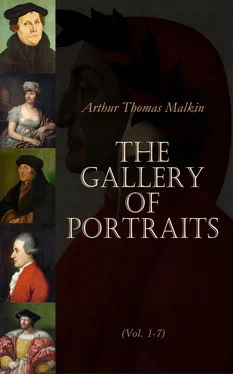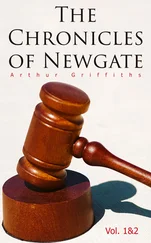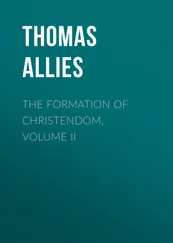The marriage of Luther, and his marriage to a nun, was the event of his life which gave most triumph to his enemies, and perplexity to his friends. It was in perfect conformity with his masculine and daring mind, that having satisfied himself of the nullity of his monastic vows, he should take the boldest method of displaying to the world how utterly he rejected them. Others might have acted differently, and abstained, either from conscientious scruples, or, being satisfied in their own minds, from fear to give offence to their weaker brethren; and it would be presumptuous to condemn either course of action. It is proper to mention that this marriage did not take place till the year 1525, after Luther had long formally rejected many of the observances of the Roman Catholic Church; and that the nun whom he espoused had quitted her convent, and renounced her profession some time before.
The war of the peasants, and the fanaticism of Munster and his followers, presently afterwards desolated Germany; and the papal party did not lose that occasion to vilify the principles of the reformers, and identify the revolt from a spiritual despotism with general insurrection and massacre. It is therefore necessary here to observe, that the false enthusiasm of Munster was perhaps first detected and denounced by Luther; and that the pen of the latter was incessantly employed in deprecating every act of civil insubordination. He was the loudest in his condemnation of some acts of spoliation by laymen, who appropriated the monastic revenues; and at a subsequent period so far did he carry his principles, so averse was he, not only from the use of offensive violence, but even from the employment of force in the defence of his cause, that on some later occasions he exhorted the Elector of Saxony by no means to oppose the imperial edicts by arms, but rather to consign the persons and principles of the reformers to the protection of Providence. For he was inspired with a holy confidence that Christ would not desert his faithful followers; but rather find means to accomplish his work without the agitation of civil disorders, or the intervention of the sword. That confidence evinced the perfect earnestness of his professions, and his entire devotion to the truth of his principles. It also proved that he had given himself up to the cause in which he had engaged, and that he was elevated above the consideration of personal safety. This was no effeminate enthusiasm, no passionate aspiration after the glory of martyrdom! It was the working of the Spirit of God upon an ardent nature, impressed with the divine character of the mission with which it was intrusted, and assured, against all obstacles, of final and perfect success.
As this is not a history of the Reformation, but only a sketch of the life of an individual reformer, we shall at once proceed to an affair strongly, though not very favourably, illustrating his character. The subject of the Eucharist commanded, among the various doctrinal differences, perhaps the greatest attention; and in this matter Luther receded but a short space, and with unusual timidity, from the faith in which he had been educated. He admitted the real corporeal presence in the elements, and differed from the church only as to the manner of that presence. He rejected the actual and perfect change of substance, but supposed the flesh to subsist in, or with the bread, as fire subsists in red-hot iron. Consequently, he renounced the term transubstantiation, and substituted consubstantiation in its place. In the mean time, Zuinglius, the reformer of Zuric, had examined the same question with greater independence, and had reached the bolder conclusion, that the bread and wine are no more than external signs, intended to revive our recollections and animate our piety. This opinion was adopted by Carlostadt, Œcolampadius, and other fathers of the Reformation, and followed by the Swiss Protestants, and generally by the free cities of the Empire. Those who held it were called Sacramentarians. The opinion of Luther prevailed in Saxony, and in the more northern provinces of Germany.
The difference was important. It was felt to be so by the reformers themselves; and the Lutheran party expressed that sentiment with too little moderation. The Papists, or Papalins (Papalini), were alert in perceiving the division, in exciting the dissension, and in inflaming it, if possible, into absolute schism; and in this matter it must be admitted, that Luther himself was too much disposed by his intemperate vehemence to further their design. These discords were becoming dangerous; and in 1529, Philip, Landgrave of Hesse, the most ardent among the protectors of the Reformation, assembled the leading doctors of either party to a public disputation at Marpurg. The particulars of this conference are singularly interesting to the theological reader; but it is here sufficient to mention, without entering into the doctrinal merits of the controversy, that whatever was imperious in assertion and overbearing in authority, and unyielding and unsparing in polemical altercation, proceeded from the mouth and party of Luther; that every approach to humility, and self-distrust, and mutual toleration, and common friendship, came from the side of Zuinglius and the Sacramentarians. And we are bound to add, that the same uncompromising spirit, which precluded Luther from all co-operation or fellowship with those whom he thought in error (it was the predominant spirit of the church which he had deserted) continued on future occasions to interrupt and even endanger the work of his own hands. But that very spirit was the vice of a character, which endured no moderation or concession in any matter wherein Christian truth was concerned, but which too hastily assumed its own infallibility in ascertaining that truth. Luther would have excommunicated the Sacramentarians; and he did not perceive how precisely his principle was the same with that of the church which had excommunicated himself.
Luther was not present at the celebrated Diet of Augsburg, held under the superintendence of Charles V. in 1530; but he was in constant correspondence with Melancthon during that fearful period, and in the reproofs which he cast on the temporizing, though perhaps necessary, negotiations of the latter, he at least exhibited his own uprightness and impetuosity. The ‘Confession’ of the Protestants, there published, was constructed on the basis of seventeen articles previously drawn up by Luther; and it was not without his counsels that the faith, permanently adopted by the church which bears his name, was finally digested and matured. From that crisis the history of the Reformation took more of a political, less of a religious character, and the name of Luther is therefore less prominent than in the earlier proceedings. But he still continued for sixteen years longer to exert his energies in the cause which was peculiarly his own, and to influence by his advice and authority the new ecclesiastical system.
He died in the year 1546, the same, as it singularly happened, in which the Council of Trent assembled, for the self-reformation and re-union of the Roman Catholic Church. But that attempt, even had it been made with judgment and sincerity, was then too late. During the twenty-nine years which composed the public life of Luther, the principles of the Gospel, having fallen upon hearts already prepared for their reception, were rooted beyond the possibility of extirpation; and when the great Reformer closed his eyes upon the scene of his earthly toils and glory, he might depart in the peaceful confidence that the objects of his mission were virtually accomplished, and the work of the Lord placed in security by the same heaven-directed hand which had raised it from the dust.
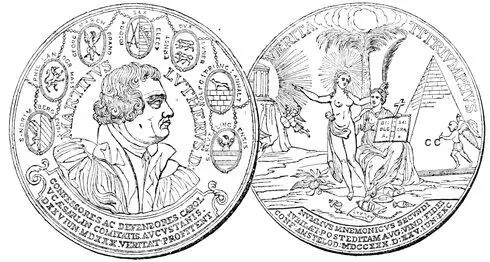
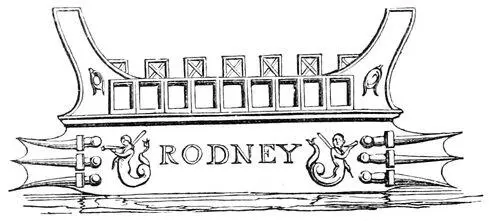 Читать дальше
Читать дальше
